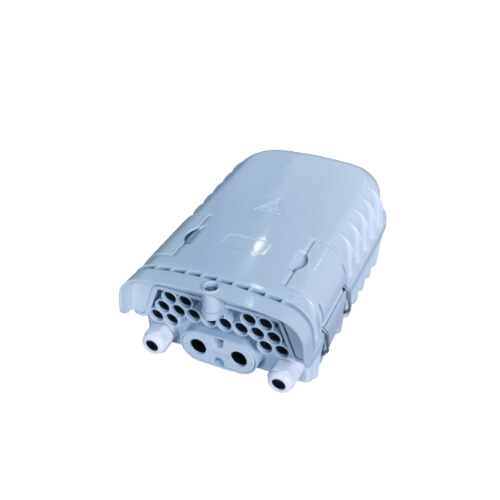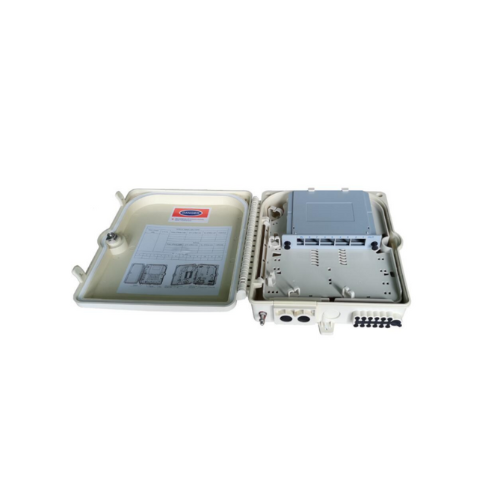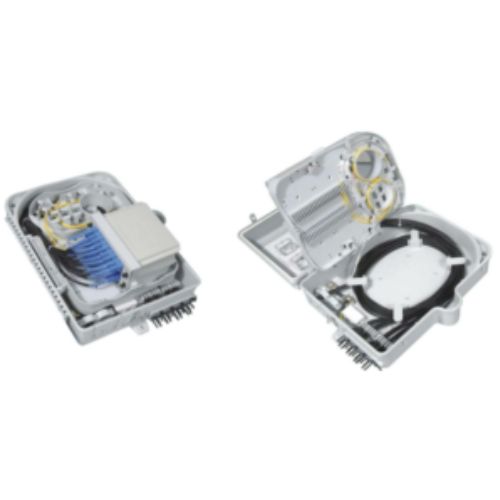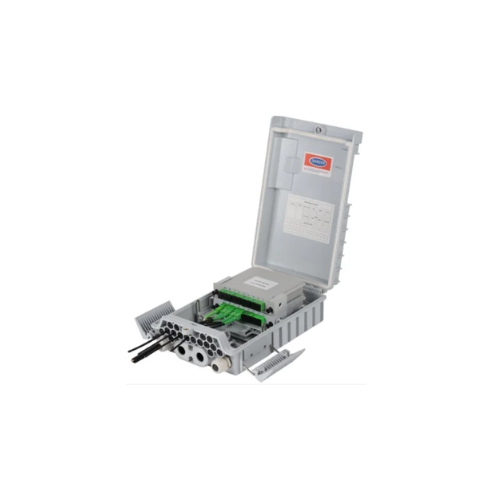Where Can Fiber Optic Distribution Boxes Be Applied?
Fiber Optic Distribution Boxes are versatile components used in various settings to manage, protect, and organize fiber optic networks. Their applications span across multiple industries and environments, making them indispensable for modern communication and data infrastructure. Below are the primary areas where Fiber Optic Distribution Boxes are applied:
1. Telecommunications Networks
1.1. Fiber-to-the-Home (FTTH)
- Description: FTTH deployments bring high-speed fiber optic internet directly to homes.
- Usage: Distribution boxes are installed at points where the fiber network branches out to individual residences. They manage the split of optical signals to multiple homes and protect the fiber connections from environmental damage.
- Benefit: Enables efficient and reliable high-speed internet access, supporting modern applications like streaming, telecommuting, and smart home technologies.
1.2. Fiber-to-the-Curb (FTTC) and Fiber-to-the-Building (FTTB)
- Description: FTTC and FTTB deliver fiber optic connections closer to end-users, such as at street corners or building basements, with the final connection often made via copper cables.
- Usage: Distribution boxes are used to manage the connection from the fiber network to the local distribution point, where it transitions to other types of cabling.
- Benefit: Improves network performance and reliability by minimizing the length of copper connections and maximizing the use of fiber optics.
2. Data Centers
2.1. High-Density Fiber Management
- Description: Data centers require the management of large volumes of fiber optic connections to link servers, storage systems, and network infrastructure.
- Usage: Distribution boxes are mounted in racks or cabinets to organize and manage high-density fiber connections, facilitating efficient data flow and minimizing signal loss.
- Benefit: Enhances the organization of fiber cables, reduces maintenance complexity, and ensures optimal data center performance.
2.2. Redundancy and Failover Systems
- Description: Redundancy is crucial for data center reliability, ensuring continuous operation even if one component fails.
- Usage: Distribution boxes support the routing of redundant fiber paths, enabling automatic failover in case of a fiber cut or network issue.
- Benefit: Increases the resilience and uptime of the data center by providing reliable backup paths for data transmission.
3. Enterprise Networks
3.1. Office Buildings
- Description: Corporate offices rely on robust internal networks to support communications, data transfer, and IT infrastructure.
- Usage: Distribution boxes manage the internal fiber optic connections between floors and departments, integrating seamlessly with structured cabling systems.
- Benefit: Provides a neat and organized fiber infrastructure, supporting high-speed connectivity and simplifying network maintenance.
3.2. Campus Networks
- Description: Large campus environments, such as universities and corporate campuses, require extensive fiber networks to connect multiple buildings.
- Usage: Distribution boxes are deployed at strategic locations across the campus to manage and distribute fiber connections between buildings.
- Benefit: Ensures efficient and reliable connectivity across the campus, supporting academic and administrative operations.
4. Residential Broadband
4.1. Multi-Dwelling Units (MDUs)
- Description: MDUs, such as apartment buildings and condominiums, require the distribution of fiber optic signals to multiple units.
- Usage: Distribution boxes are placed in common areas or basements to distribute the fiber signal to individual apartments, managing connections and protecting fibers.
- Benefit: Facilitates high-speed broadband access for multiple residents, enhancing living standards and supporting digital lifestyles.
4.2. Neighborhood Fiber Distribution
- Description: Residential neighborhoods with fiber optic infrastructure need efficient ways to distribute fiber connections to individual homes.
- Usage: Distribution boxes are installed in utility cabinets or underground vaults to manage the distribution of fiber to homes within the neighborhood.
- Benefit: Provides robust and scalable broadband connectivity solutions for suburban areas, supporting modern home internet needs.
5. Industrial Applications
5.1. Manufacturing Facilities
- Description: Modern manufacturing relies on data-driven processes and real-time monitoring, requiring robust fiber optic networks.
- Usage: Distribution boxes manage the fiber connections that support industrial control systems, monitoring equipment, and communication networks.
- Benefit: Enhances the reliability and performance of industrial networks, supporting automation and data analytics.
5.2. Utility Networks
- Description: Utility companies use fiber optic networks to support infrastructure monitoring, smart grid technology, and communication systems.
- Usage: Distribution boxes are used to manage fiber connections within utility infrastructure, ensuring secure and reliable data transmission.
- Benefit: Improves the efficiency and reliability of utility operations, supporting critical infrastructure monitoring and management.
6. Government and Public Sector
6.1. Municipal Networks
- Description: Municipalities deploy fiber optic networks for public services, emergency response, and community connectivity.
- Usage: Distribution boxes manage the connections within municipal fiber networks, supporting communication between public offices, schools, and emergency services.
- Benefit: Enhances public sector efficiency and supports critical services with reliable network infrastructure.
6.2. Defense and Security Networks
- Description: Defense and security agencies require secure and reliable communication networks for operations.
- Usage: Distribution boxes provide organized and protected fiber connections in secure facilities, ensuring high-performance data transmission.
- Benefit: Supports mission-critical communications with secure and reliable fiber infrastructure.
Why Choose Fibermint for These Applications?
Fibermint’s Fiber Optic Distribution Boxes are designed to excel in all these applications due to their robust construction, versatile design, and ease of use. Here’s why Fibermint stands out:
- Tailored Solutions: Offers a range of distribution boxes suited for different environments and requirements, ensuring the perfect fit for any application.
- Quality Assurance: Rigorous testing and adherence to industry standards guarantee reliable performance and durability.
- Comprehensive Support: Provides expert technical assistance and extensive warranties, ensuring customer satisfaction and confidence in their network infrastructure.
By integrating Fibermint’s Fiber Optic Distribution Boxes into your network, you ensure a scalable, reliable, and efficient fiber optic infrastructure capable of meeting the diverse demands of today’s connectivity needs.
